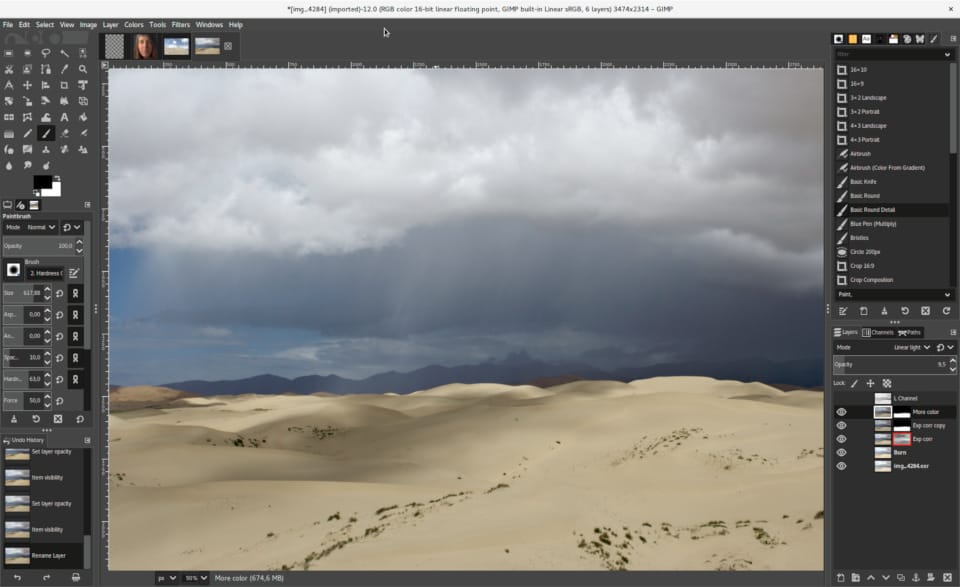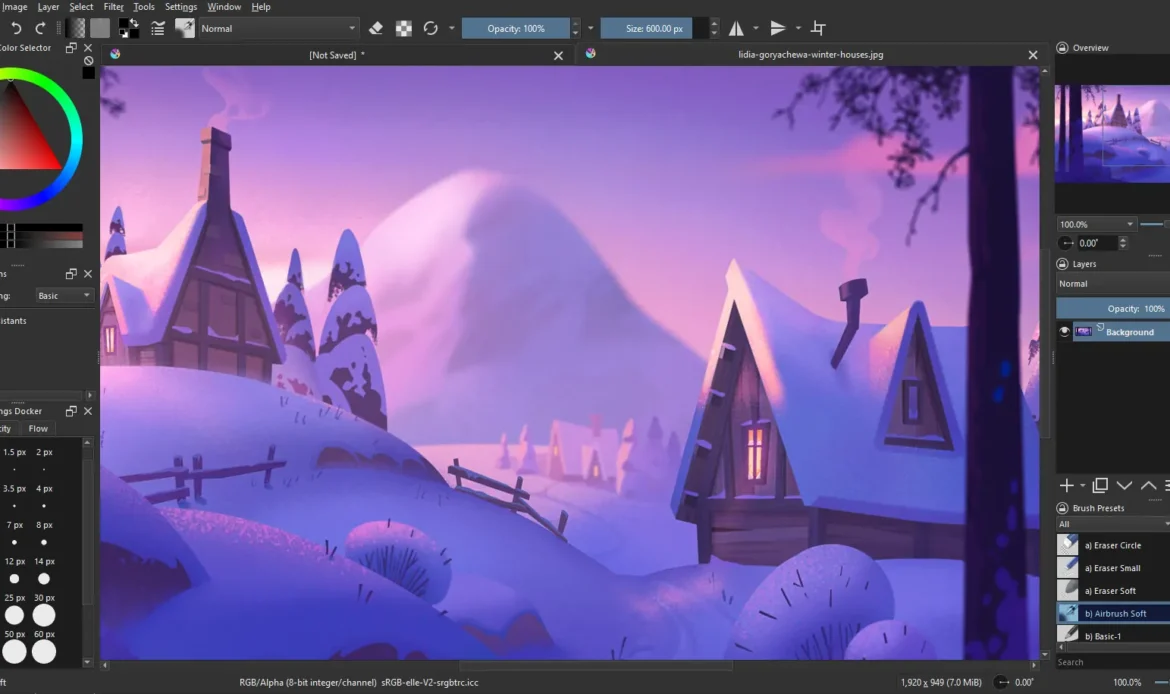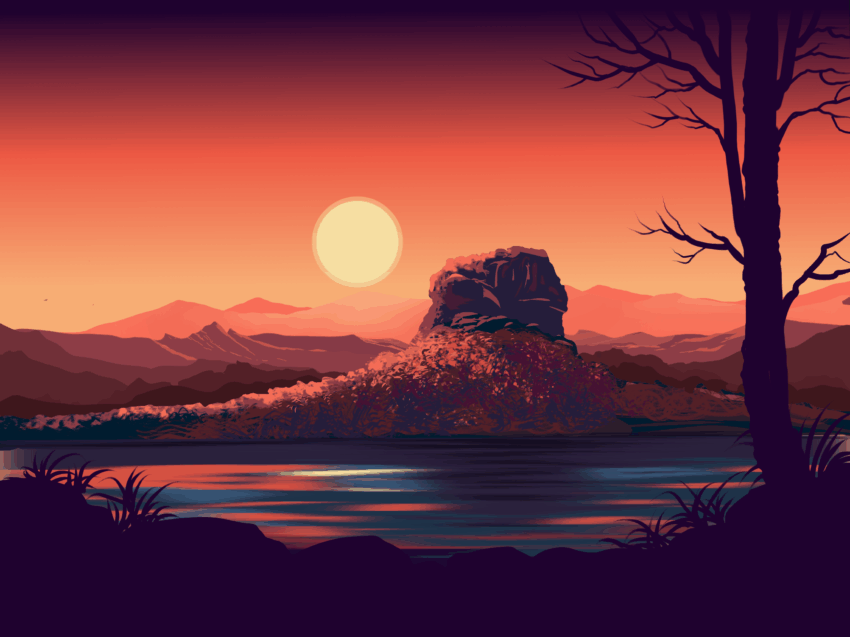Why Krita Is the Modern Choice for Digital Creatives
When it comes to free and open-source art software, two names dominate the conversation: Krita and GIMP. Both are powerful, community-driven tools that give creators professional-grade features without the hefty subscription fees. But while GIMP has long been the go-to for image editing, Krita has evolved into a modern powerhouse built specifically for digital artists, illustrators, and animators.
Let’s explore how these two programs compare — and why Krita might just be the better choice for today’s creative generation.
Purpose-Built for Artists
The first thing to understand is that Krita and GIMP were designed with different goals in mind.
GIMP (GNU Image Manipulation Program) was created in the 1990s as a free alternative to Photoshop. It excels at photo editing, compositing, and graphic design tasks such as adjusting colors, retouching photos, and manipulating images for print or web.

Krita, on the other hand, was built from the ground up for digital painting and illustration. It’s tailored for artists who draw, paint, and design directly on a tablet or touchscreen. Every detail — from the brush engine to the color mixing tools — is designed to make digital art feel natural and intuitive.

In short:
GIMP edits images.
Krita creates them.
A More Modern, Artist-Friendly Interface
One of the first things artists notice when opening Krita is how modern and intuitive it feels. The interface is clean, visually consistent, and customizable, with everything centered around the canvas. You can dock, move, and collapse panels with ease, creating a distraction-free workspace that feels fluid — even on smaller screens or stylus setups.
By comparison, GIMP’s interface still reflects its legacy roots. It’s functional but dated, often requiring multiple floating windows and extra clicks to access common tools. For those transitioning from Photoshop, Krita feels refreshingly modern and less cumbersome.
Krita’s overall experience simply feels designed for today’s creatives, not retrofitted from the past.
Brushes, Layers, and Painting Tools That Shine
Krita’s brush engine is one of its crown jewels. It offers dozens of customizable brush engines, realistic textures, stabilizers for smoother strokes, and advanced dynamics for stylus pressure and tilt. Artists can save custom brush presets, share them with others, or download full brush packs from the vibrant Krita community.
GIMP, while capable of painting, lacks this level of nuance. Its brush system was never meant to replicate the organic feel of real paint. You can draw, but you’ll quickly miss Krita’s smooth blending, natural stroke behavior, and fluid responsiveness.
Add in layer effects, blending modes, masks, and filters, and Krita feels like a digital painter’s studio — powerful, fast, and cohesive.
WebP Support and Modern File Formats
Another area where Krita shows its forward-thinking design is in file format support, especially WebP, the efficient image format developed by Google.
While GIMP also supports WebP through plug-ins, Krita integrates it natively and intuitively. You can export directly to .webp via File → Export, with options for:
- Lossless or lossy compression
- Transparency preservation
- Animation export
- Custom quality sliders
That means artists can create crisp, lightweight images ready for modern websites and social platforms — no extra plug-ins or workarounds required. It’s another example of how Krita aligns with today’s web standards and content workflows.
Animation and Beyond
Krita isn’t limited to still images. Its frame-by-frame animation tools make it an incredible choice for illustrators branching into motion. You can draw keyframes, use onion-skinning, and export your sequence as an animated WebP, GIF, or video.
GIMP has experimented with animation through filters and layers, but Krita’s implementation feels truly integrated — again, built for the artist of today, not as an afterthought.
Performance and Compatibility
Krita handles large canvases and complex brushwork efficiently, especially when paired with a modern GPU. Its OpenGL acceleration and tablet-pressure optimization make painting smooth, even at high resolutions.
GIMP remains lightweight and efficient for photo manipulation, but when it comes to live painting or real-time brush response, Krita’s performance feels far more refined.
Both support PSD files and standard formats, but Krita’s integration tends to maintain more fidelity when importing or exporting art assets.
Community and Ecosystem
Both Krita and GIMP boast large, passionate communities. But Krita’s community feels especially vibrant among artists — from indie illustrators to professional concept artists. The Krita Artists Forum, official tutorials, and YouTube creators have built a thriving ecosystem that encourages sharing and growth.
GIMP’s community, while robust, leans more toward developers, photographers, and designers. If you live and breathe digital art, Krita’s crowd feels like home.
Verdict: Krita Leads the Modern Era of Digital Creation
| Feature | Krita | GIMP |
|---|---|---|
| Primary Purpose | Digital painting & illustration | Photo editing & compositing |
| Interface | Modern, artist-focused | Functional but dated |
| Brush Engine | Advanced, customizable | Basic |
| Animation | Built-in | Limited |
| WebP Export | Native & flexible | Plug-in required |
| Learning Curve | Smooth for artists | Steeper for beginners |
| Ideal For | Artists, illustrators, animators | Photographers, graphic designers |
If you’re primarily retouching photos or doing graphic design, GIMP still holds its ground. But if you’re painting, sketching, storyboarding, or animating, Krita stands out as the modern, artist-first alternative that continues to evolve at a rapid pace.
Final Thoughts
Krita isn’t just another open-source program — it’s a symbol of how far digital art tools have come. It merges professional-grade performance with a modern, artist-centric design philosophy, making it an inspiring environment to create in.
So if you’re deciding between Krita and GIMP, ask yourself:
Do you want to edit images, or create art?
Because if your heart leans toward creation — Krita is the future.

